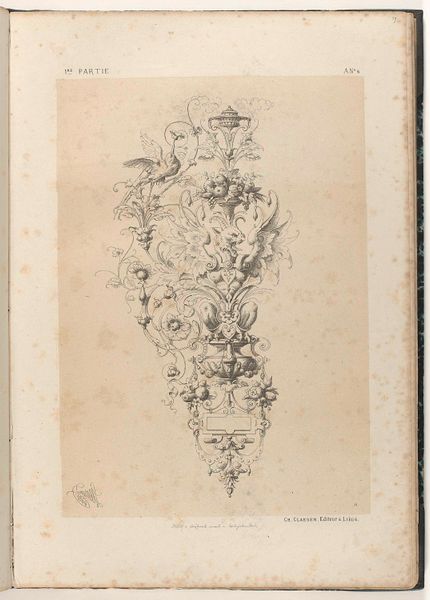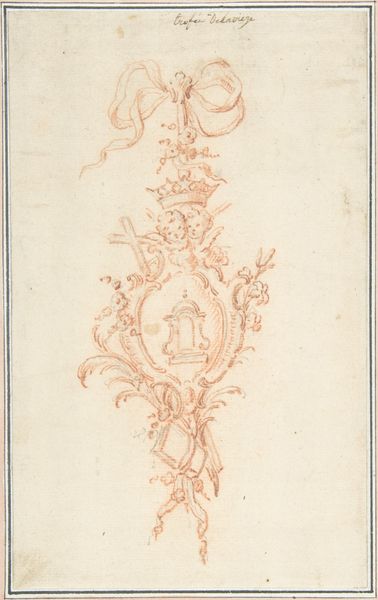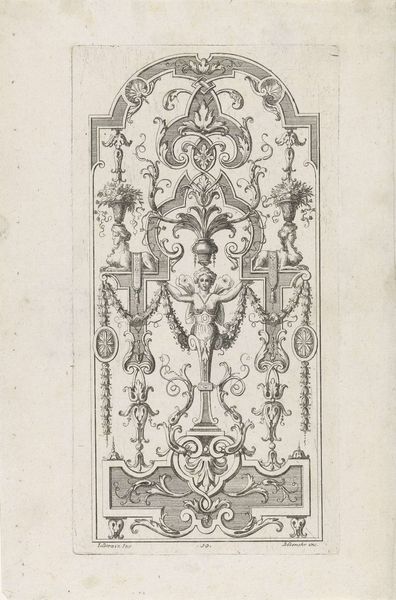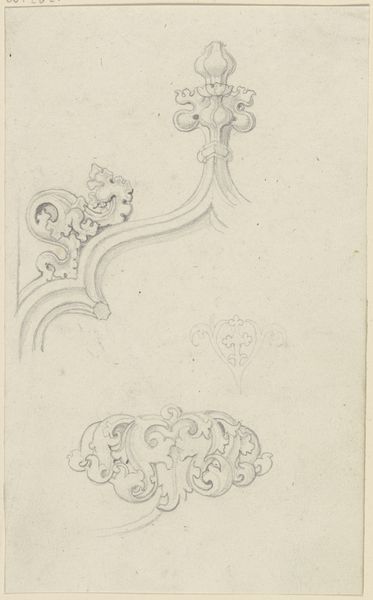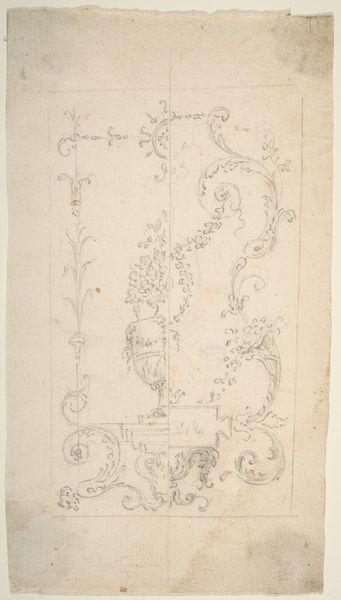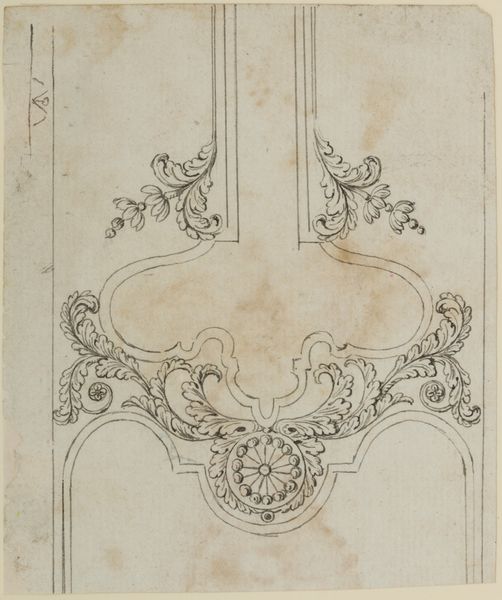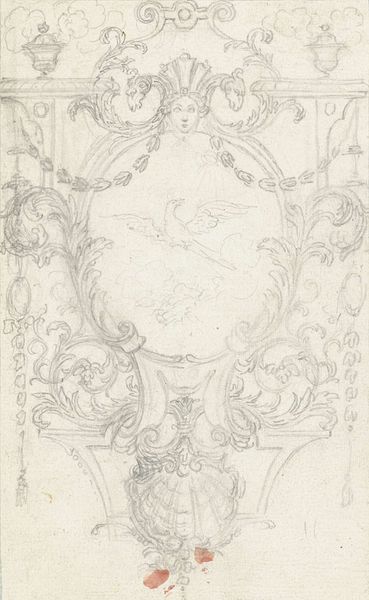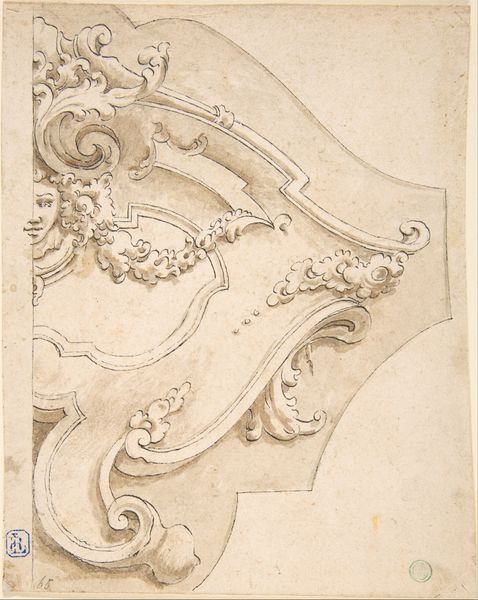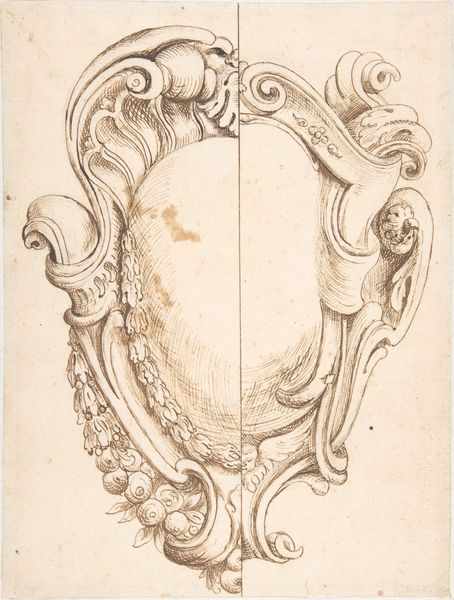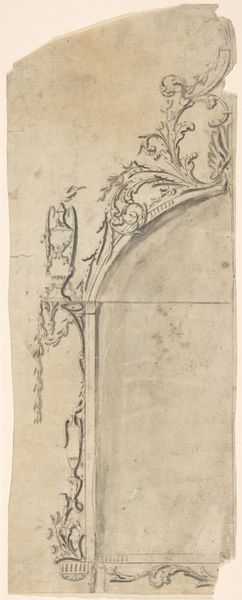
Dimensions: height 310 mm, width 205 mm
Copyright: Rijks Museum: Open Domain
This is Luigi Valadier’s sketch for a console clock. Note the swirling acanthus leaves and shell motifs that adorn the design. These are not mere decorations but echoes of an ancient visual language. The acanthus, taken from the Mediterranean plant, was prominently used in classical architecture. The Greeks and Romans, who saw the natural world as divine, incorporated it into their temples and monuments, symbolizing enduring life and regeneration. Shells, likewise, were sacred to Venus, goddess of love and beauty, embodying both fertility and protection. Consider the ways these motifs have journeyed through time. From adorning the capitals of Corinthian columns to resurfacing on an 18th-century clock, their underlying message persists. This decorative grammar, born from a longing for harmony and order, continues to engage us, tapping into a collective memory of beauty and the eternal rhythms of nature. Like the relentless turning of time itself, these symbols resurface, reborn in each new era.
Comments
No comments
Be the first to comment and join the conversation on the ultimate creative platform.
